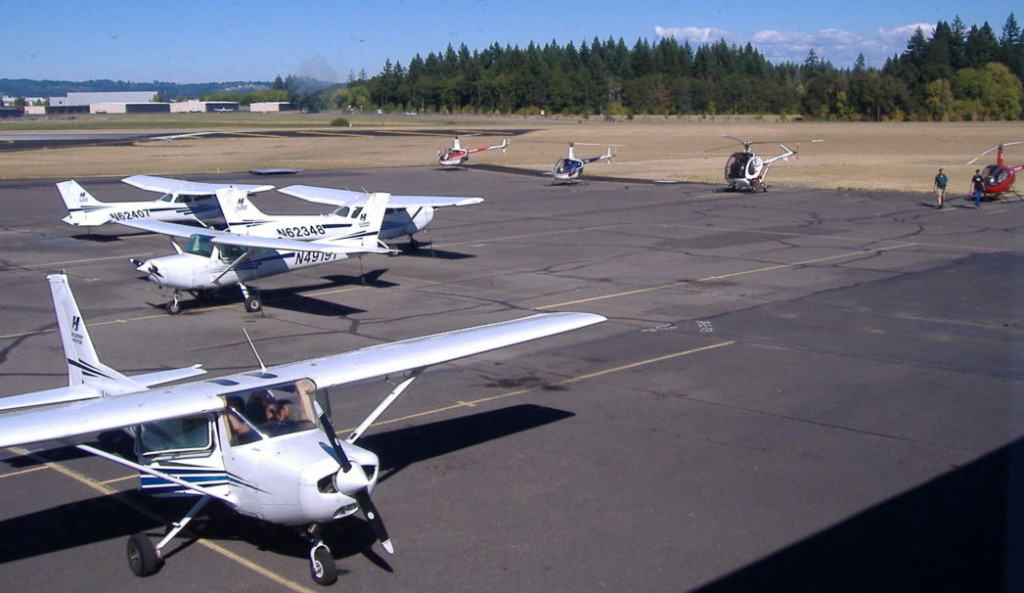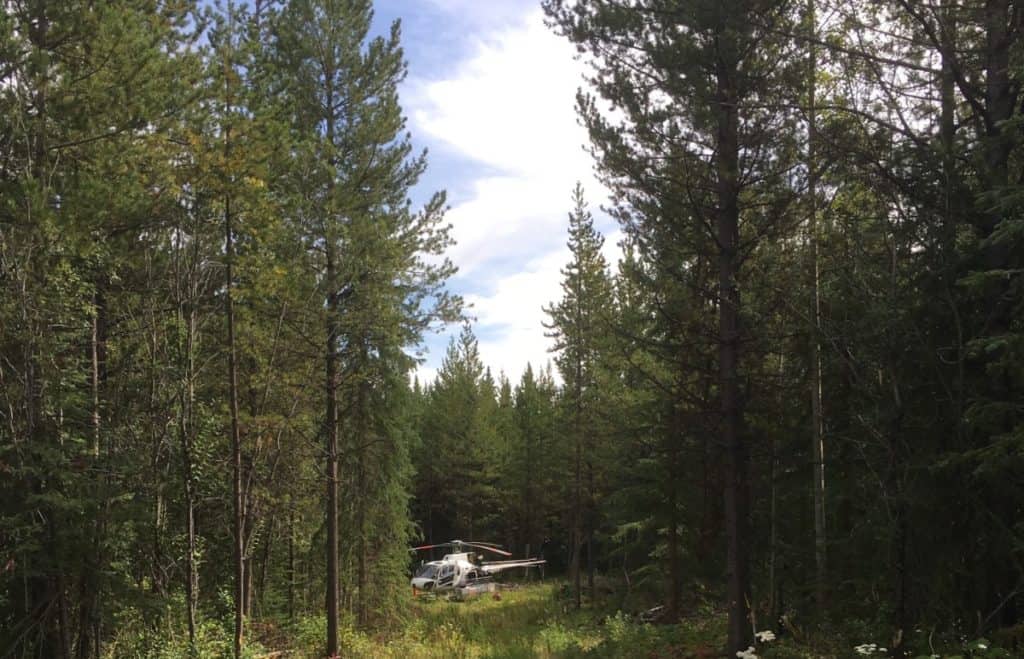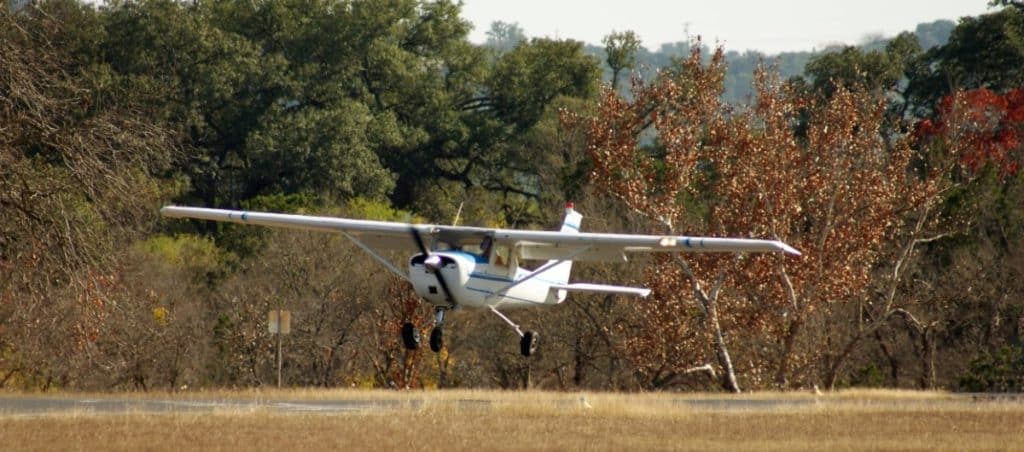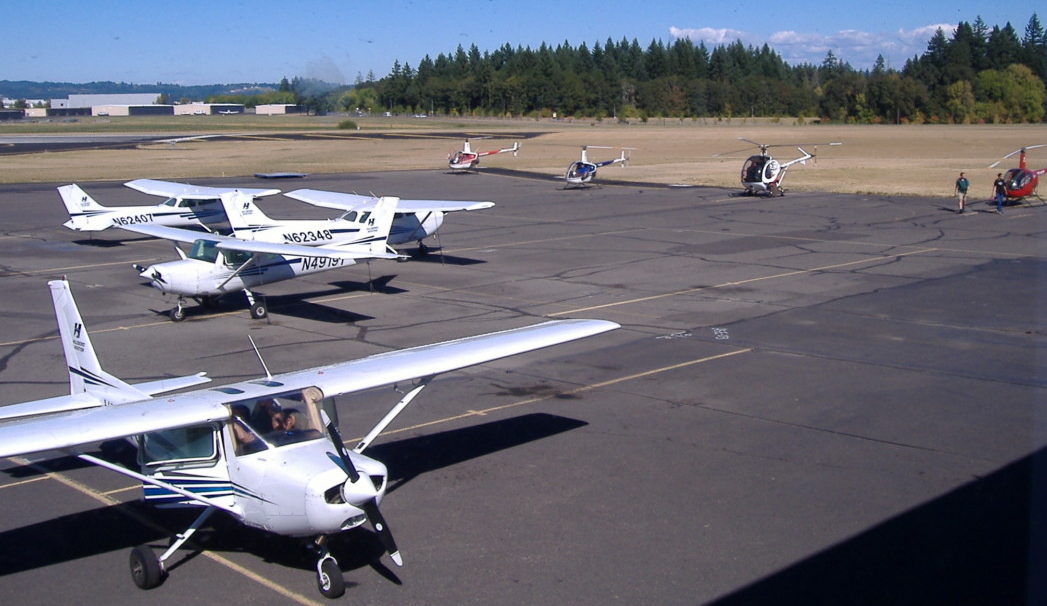
When someone is wanting to learn how to fly a common dilemma awaits them – Do they learn to fly an airplane or a helicopter? There seems to be a stigma surrounding helicopters that they are very difficult to fly, yet you see them being flown with smoothness and finesse all the time. So are helicopters harder to fly than an airplane?
Airplanes are easier to fly as they are aerodynamically stable aircraft which means they want to fly. Helicopters are an aerodynamically unstable aircraft which means they do not want to fly. Helicopters require constant & balanced pilot inputs on all controls to keep the helicopter under control.
When first learning to fly, any aircraft can seem challenging, and to be honest, once you have your pilot license there are times when flying either aircraft is going to be difficult. In general, a helicopter is a lot harder to learn to fly especially when it comes to mastering the hover, but no matter which aircraft type you choose you will be in for a fun and challenging journey!
To find out why helicopters are harder to fly than an airplane please read on…
Why are Helicopters Harder to fly than an Airplane?
Aircraft designers have hundreds, if not thousands of things to consider when designing an aircraft. How it flies and handles are two of the most important, especially when there are going to be no sophisticated avionics or automated flight control systems.
Basic aircraft like those used for training and private ownership need to be as easy and stable to fly as possible but the type of aircraft will dictate just how easy these two factors are! All aircraft have two types of stability that affect how the aircraft flies:
- Static Stability
- Dynamic Stability
Understanding these two principles will show you why a helicopter is much harder to fly than an airplane.
Static Stability
When an aircraft is affected by a gust of wind, a thermal current, or turbulence, for example, its static stability is how well the aircraft returns back to its original flight path after the disturbance.
If an aircraft returns back to its original flight path it is described as ‘Statically Stable’.
If an aircraft does not return back to its original flight path it is described as ‘Statically Unstable’.
There are three types of Static Stability:
For discussion, let’s say a gust of wind pitches the aircraft nose up
Positive Static Stability = After the initial pitch up, the aircraft nose drops and returns back to level pitch.
Neutral Static Stability = After the initial pitch up, the aircraft nose stop and remains at the new pitch attitude.
Negative Static Stability = After the initial pitch up, the aircraft nose continues pitching up (Not good!)
Aircraft designers want to aim for Positive Static Stability on every axis.

Join My Newsletter & Get Great Tips, Information and Experiences To Help You Become a Superb Pilot!
Dynamic Stability
Just as before, when an aircraft is disturbed from its current flight path its Dynamic Stability is how the aircraft responds over time.
If an aircraft returns back to its original flight path in a reasonable timeframe it is described as ‘Dynamically Stable’.
If an aircraft continues to oscillate it is described as ‘Dynamically Unstable’.
Again, there are three types of Dynamic Stability:
Positive Dynamic Stability = After the initial pitch up, the aircraft nose drops and oscillates up and down back to level pitch with each oscillation being smaller than the last. Think of ripples dissipating after a stone is dropped into a pond.
Neutral Dynamic Stability = After the initial pitch up, the aircraft nose pitches down and then back up again. The oscillations remain the same and constant. Think ocean waves on a beach.
Negative Dynamic Stability = After the initial pitch up, the aircraft nose begins to oscillate up and down, with each oscillation getting bigger than the previous – Think child swinging higher and higher on a swing (Not good!).
Aircraft designers want to aim for Positive Dynamic Stability on every axis.
Most simple airplanes have characteristics of both Positive Static and Positive Dynamic Stability – Which makes them easy to control.
Most helicopters have characteristics of Neutral Static Stability and Negative Dynamic Stability – Which makes them very difficult to control.
Because a helicopter gets its lift by rotating its airfoils it creates a whole plethora of design challenges and its instability is just one of them. The limitations of physics dictate how much the designers can manipulate the stability characteristics and still get the aircraft to fly. They are much more restricted compared to airplane designers.
Its neutral static and negative dynamic stability characteristics are what need to be learned and controlled to safely handle a helicopter.

Unfortunately, these characteristics are present the second the helicopter lifts off the ground which makes learning to hover a helicopter very difficult and time-consuming. You may have heard these terms connected with ‘The Pendulum Effect’ and ‘Over Controlling’.
For a more detailed explanation of these terms please check out my article:
Learning To Fly Helicopters – Is it really that hard?
When an airplane flies, it generates lift by moving air over its wings. So long as the airspeed of the airplane is sufficient, the airplane flies. Aircraft designers then design the wings to give it positive static and dynamic stability characteristics.
If you let go of the flight controls in an airplane when it’s trimmed, it will fly straight and level and will require minimal pilot input to correct for wind, turbulence, or convection.
A helicopter, however, requires constant pilot input on every flight control to bring the helicopter back to its required flight path and attitude, even when in forward flight. If you let go of the Cyclic in a helicopter the aircraft will want to roll or pitch on you until it is in an unrecoverable state of flight.
The other factor that makes learning to fly a helicopter very difficult is that if you make a change in one of the flight controls it affects the other two. Balancing the flight controls and inputting the right amount at the right time is the key to mastering the hover, let alone flying all the other aircraft maneuvers!
When I was an instructor this was one of my most favorite times. Seeing the joy on the student’s face when they master the hover is fantastic!
To give you a really good idea of what it’s like to hover a helicopter please see this video from Destin at Smarter Every Day:
Do You Need to Learn to Fly an Airplane Before a Helicopter?
Learning to fly an airplane before a helicopter is not required. Helicopters and airplanes fly and handle very differently with each needing their own specific flight training. Ground school & airmanship for both aircraft are similar which is a benefit, but time in an airplane is not beneficial.
I get asked this question a lot and many people seem to be under the impression that you first need to learn to fly in an airplane before moving over to a helicopter. This is not true. In my opinion, if a pilot is wanting to learn to fly they need to select the type of aircraft they wish to fly and then do all their training on that.
Helicopters and airplanes are like cars and motorcycles. Both share the same rules of the road/air, courteousness and both get you from A to B, but each handles very differently to one another.

If a pilot wishes to fly an airplane first then bringing over the rules of the air, weather, airmanship, radio communications and a majority of the ground school theory will help them progress through training faster, but when it comes to actually learning to handle the helicopter, anything learned on an airplane beforehand is of very little use.
Helicopters handle completely differently from an airplane and require the student to develop a feel for the aircraft and to pre-empt when to put in a control pressure and by how much. It instability mentioned above is what requires mastering. This instability is not present in an airplane.
I have taught students who had come from an airplane background and they did not progress any faster than the helicopter students. The only benefit they got was that they already had a good understanding of general aviation theory.
For a student to go and spend 30 hours learning to fly an airplane before moving over to a helicopter, that time and money is wasted in my opinion. Save the cash and time and go straight into a helicopter.
To Finish
Learning to fly an aircraft is a unique challenge. learning to fly both an airplane and a helicopter requires very different skills to be mastered to competently pilot either aircraft. The stability issues each aircraft poses dictate how much of a challenge learning to fly each aircraft type will be for the student.
Airplanes are a great way to get from Point A to Point B quickly, but if you want the flexibility to land anywhere along that route, then a helicopter is the way to go!
Further Reading
If you found this article interesting then here are a few more I think you may enjoy:


